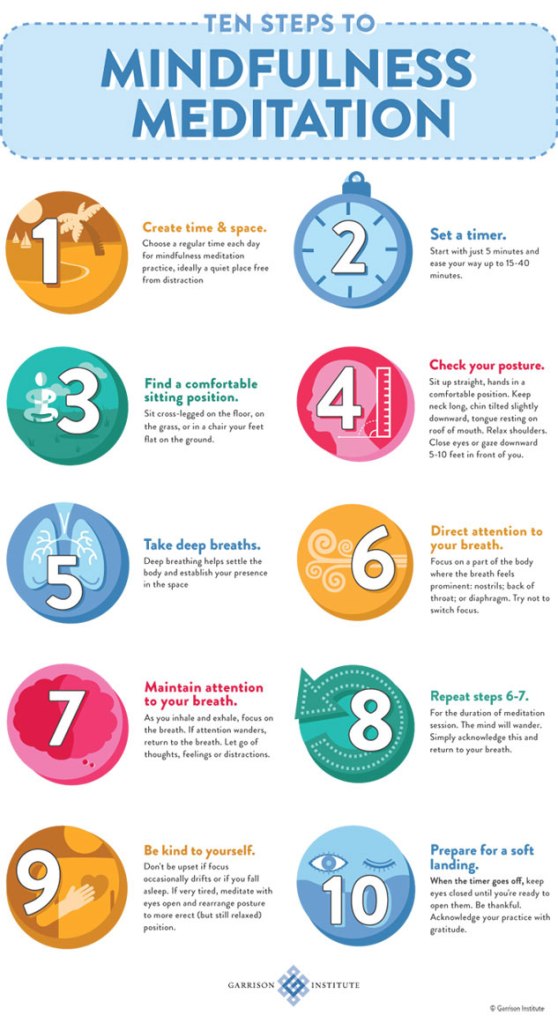5 Important Points on Mindfulness Meditation
1. Mindfulness is an observing, not a thinking process
Mindfulness uses the mental process of observing or noticing rather than thinking. The observing part of your mind does not have an opinion, any desires, likes or dislikes, its only process is to observe. The observing part of your mind can only observe the present moment and can focus the inner world, the outer world or aspects of both all at once. Aspects of the inner world we can observe include thoughts, feelings, memories, urges or sensations. Aspects of the outer world we can observe include sounds close by or far away, sensations such as vibrations, the wind against our skin, tastes, smells and so on.
2. It’s normal to get distracted
It’s normal and natural to get distracted by thoughts when practicing mindfulness, it happens to everyone. Your ability to notice that you have been distracted and refocus on the present moment is where all the learning and re-wiring of the brain happens.
3. Always set a timer
You need to set a timer or use a recording. This way you can aim to be 100% mindful for a set amount of time rather than letting your thinking mind decide ‘yeah, that’s enough’.
4. Some days are better than others and that’s okay
Mindfulness is a process that can never be truly mastered, there is always room to grow. Some days you may feel really connected to the present moment and other days you may be distracted by everything and anything. That’s okay, go easy on yourself. On the days where it’s especially difficult to focus, your repeated and sustained effort is going to teach you more than ten days of perfect practice. On these more difficult days practice self love and be soft and humble with yourself.
This yoga pose is called ‘supta-baddha-konasana’. Putting one hand on your belly and one on your heart, whilst practicing mindful breathing, this is a great way to cultivate an attitude of self-love. This is a powerful activity to do if you are feeling frustrated or finding it difficult to focus.
5. If your aim is solely to reduce symptoms of stress, anxiety or worry you are setting yourself up for failure
Feelings of relaxation and symptom reduction may arise, such as lowered anxiety, however these are just a beneficial by-product of having contact with the present moment. By all means enjoy positive feelings as they come up, but try not to make them your sole purpose for practicing. Your aim when practicing mindfulness should be to have contact with whatever you are experiencing in present moment with an attitude of openness and acceptance.
Below is 10 steps to mindfulness meditation by the Garrison Institute





